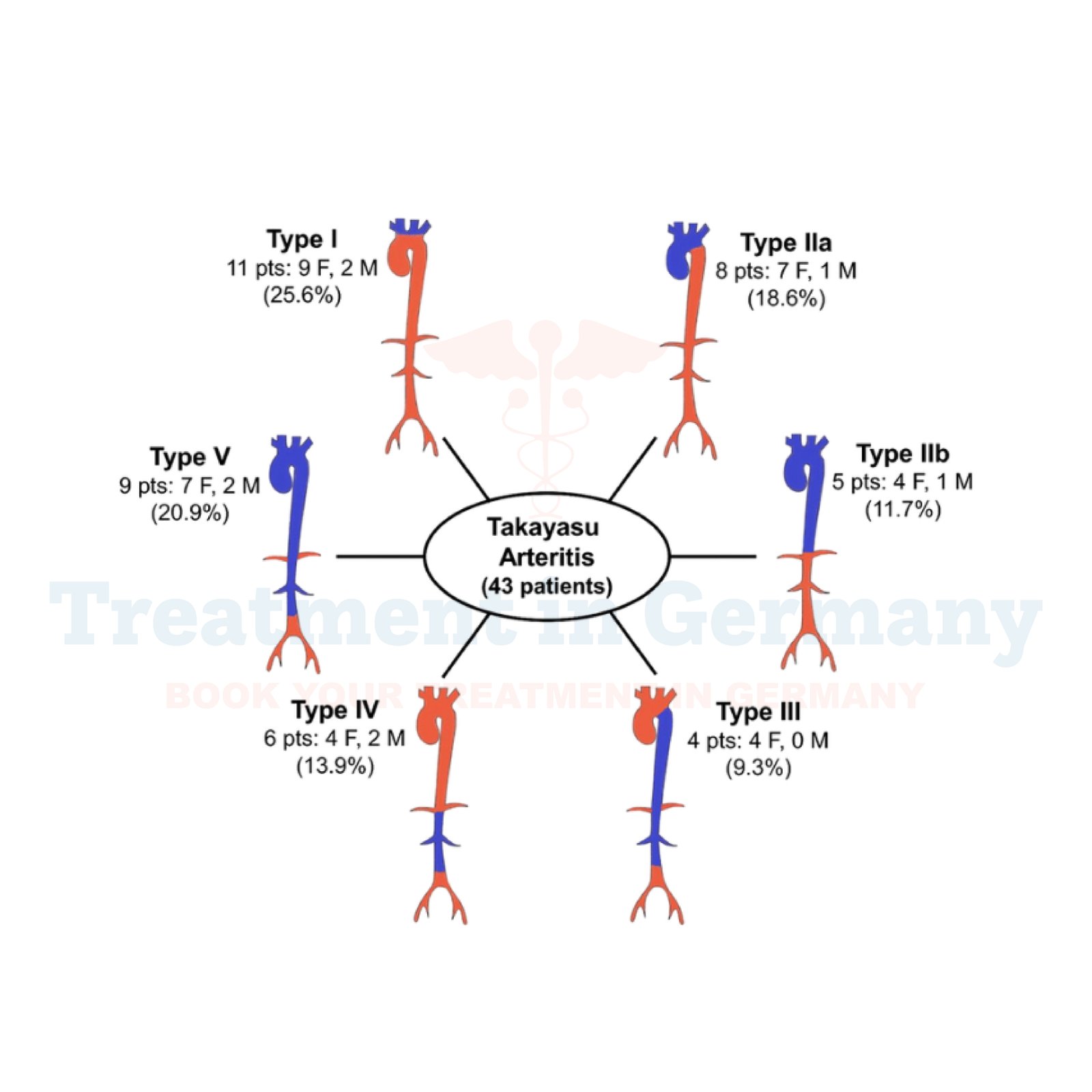What is Takayasu's Arteritis?
Takayasu's Arteritis is a rare type of vasculitis, a condition that causes inflammation of the blood vessels.
Specifically, it affects the large arteries, such as the aorta and its main branches. This inflammation can lead to narrowing, blockage, or even aneurysm formation in these crucial blood vessels.
The disease predominantly affects young women and can lead to significant health complications if left untreated. Its exact cause remains unknown, but it is believed to be an autoimmune disorder where the body's immune system mistakenly attacks its own tissues.
Side Effects of Takayasu's Arteritis
The side effects and symptoms of Takayasu's Arteritis can vary depending on which arteries are affected and the severity of the inflammation. Common symptoms include:
- Fatigue: Persistent tiredness and weakness.
- Fever: Low-grade fever that can come and go.
- Weight Loss: Unexplained weight loss despite normal eating habits.
- Muscle and Joint Pain: Discomfort or pain in muscles and joints.
- Chest Pain: Discomfort or pain in the chest, which may be related to heart involvement.
- Reduced Pulses: Weak or absent pulses in the arms or legs due to blocked blood flow.
- High Blood Pressure: Elevated blood pressure resulting from narrowed arteries.
If you experience any of these symptoms, it is crucial to seek medical attention promptly, as early diagnosis and treatment can prevent serious complications.
How is Takayasu's Arteritis Diagnosed?
Diagnosing Takayasu's Arteritis can be challenging due to its rarity and the overlap of its symptoms with other conditions. The diagnostic process typically involves:
- Medical History and Physical Examination: Your doctor will review your symptoms, medical history, and perform a physical examination to check for signs of artery inflammation.
- Blood Tests: These tests can detect markers of inflammation and help rule out other conditions.
- Imaging Studies: Techniques such as ultrasound, MRI, CT scans, or PET scans are used to visualize the blood vessels and assess the extent of the inflammation and damage.
- Biopsy: In some cases, a biopsy of the affected artery may be performed to confirm the diagnosis.
In Germany, specialized centers and clinics are well-equipped to perform these diagnostic tests and provide accurate results.
Potential Treatment of Takayasu's Arteritis
Treatment for Takayasu's Arteritis aims to reduce inflammation, manage symptoms, and prevent complications. Treatment options may include:
Medications:
- Corticosteroids: These are commonly used to quickly reduce inflammation and control symptoms.
- Immunosuppressants: Drugs like methotrexate or azathioprine may be prescribed to suppress the immune system's overactivity.
- Biologics: In severe cases, newer medications that target specific immune system components might be used.
Lifestyle Changes:
- Healthy Diet: Maintaining a balanced diet to support overall health.
- Regular Exercise: Engaging in moderate physical activity, as tolerated, to improve cardiovascular health.
- Blood Pressure Management: Monitoring and controlling blood pressure to prevent complications.
- Surgical Interventions: In cases where arteries are significantly damaged or blocked, surgical procedures like angioplasty or bypass surgery may be necessary to restore normal blood flow.
👉 Contact us for further information and receive a complimentary consultation.

.webp)
.webp)
 (1).webp)
 (1).webp)

.webp)
.webp)
 (1).webp)
 (1).webp)
